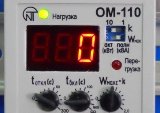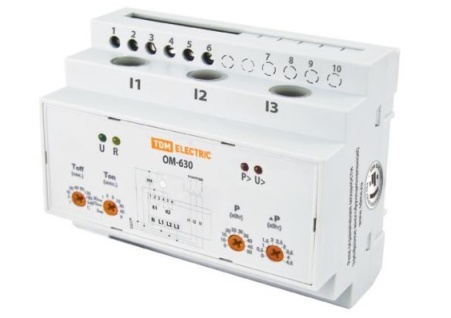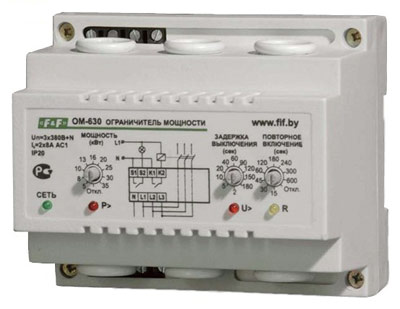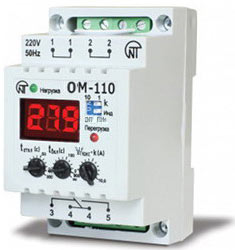Power limiters
 Single-phase and three-phase modular power limiters are used to control the nature of electrical energy consumption in automatic mode.
Single-phase and three-phase modular power limiters are used to control the nature of electrical energy consumption in automatic mode.
These devices continuously monitor the state of the electrical network during its operation under load, and if the energy consumption exceeds the value set by the user, the load circuit will be automatically disconnected from the line. After a certain, predetermined period of time, the device will automatically reconnect the load circuit to the line, and if the consumption has fallen below the critical, the load circuit will remain connected.
The power limiting device is based on several blocks. The meter receives information about how electricity is currently being consumed through current and voltage sensors. The logic block of the device, in turn, calculates the exact value of the currently consumed power and compares it with what is set as the maximum allowable (critical).If the resulting value is higher than the critical value, then the executive unit will receive a trip signal and the contactor will operate accordingly.

If such an emergency shutdown occurs, the user should switch off the excess load as it is quite possible that a particular device has exceeded its consumption limit.
After a certain time interval, the power limiter will try to switch the load circuit back on, and by this time the "extra" loads should already be off. If the conditions for the permissible level of consumption are met, the power limiter will continue to monitor the process of electricity consumption in normal mode.

Adjusting the unit is quite simple and some limiter models are equipped with a display so you can visually track the current status. An example is the OM-110 single-phase power limiter, allowing both active and total power consumption to be controlled. It has two limits: from 0 to 2 kW and from 0 to 20 kW, one of which can be selected using a switch.

Potentiometers adjust settings for critical power, turn-off time, and turn-on time. The outputs are divided into two groups of terminals — for connecting the supply wires and for controlling the connection and disconnection of the load. Built-in contactors have current and voltage limits (for the OM-110 this is 8 amps at 250 volts), so external contactors can be connected. Some models of power limiters have the ability to turn off non-preferred loads, leaving only priority loads connected.One way or another, the technical documentation for each such device always contains a comprehensive description and connection diagram.
Often, a power limiter is installed at the entrance to a private house or office building, and when the power limit is exceeded, all consumers are disconnected and then the connection is restored. Previously, it was necessary to call an electrician to restore power, now, thanks to the use of power limiters, this happens automatically.
A convenient solution is when the electrical appliances of the home are divided into two groups, one of which should not be turned off under any circumstances, and the other consumers are turned on through the power limiter, then, for example, the lighting will not go out during overload and will enable one to react quickly and act constructively.
